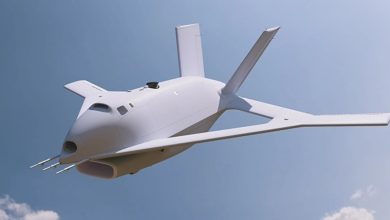Dutch NATO math portends uphill battle for Europe on defense spending

PARIS — The Netherlands worked out the costs of meeting NATO’s new capability targets, providing a taste of the billion-euro budget challenge European members of the alliance face to boost their military posture in the face of a more aggressive Russia.
The Dutch calculate that meeting their share of the targets will cost at least €16 billion to €19 billion ($18 billion-$21 billion) a year on top of the existing defense budget, Defence Minister Ruben Brekelmans told parliament in a letter last week. That would amount to about 3.5% of GDP, from 2% now – conveniently also the core defense spending target that NATO leadership is calling for.
NATO’s Capability Targets 2025, to be formally set at a summit in The Hague in June, will significantly increase the requirements compared to previous targets, according to the Dutch. The CT25 focus will be on ground-based air and missile defense, ground-based fire support, land maneuver units and joint enablers, Brekelmans said.
For the larger economies of Germany, France and the U.K., meeting the new targets means “we’re no longer talking about a few billion extra per year, but tens of billions,” said Dick Zandee, senior research fellow at Dutch think tank Clingendael Institute and former head of planning at the European Defence Agency.
The three countries have the biggest defense budgets of European NATO members, spending a little over 2% of GDP on their military. The Netherlands is Europe’s sixth-biggest spender, lifting its 2025 defense budget to €22 billion euros from €21.4 billion last year.
U.S. President Donald Trump has repeatedly demanded NATO countries increase military spending to 5% of GDP, threatening to pull out of the alliance if members don’t pay up.
NATO Secretary General Mark Rutte said this week he expects alliance members to agree to a 5% spending target in The Hague, with a proposal for 3.5% of GDP for direct military spending and another 1.5% for related spending such as infrastructure and cybersecurity.
The Netherlands also estimates meeting the new NATO capability targets will require 17,000 to 18,000 more personnel.
While the 32-nation alliance typically keeps the capability targets secret, NATO Supreme Allied Commander Transformation Adm. Pierre Vandier said in March the alliance will ask members to raise military capability targets by 30% – even with allies already 30% behind on delivering on existing goals.
The Dutch say the NATO “standard path” to fully meet the capability targets has been 19 years, but current threats make a faster build-up necessary, and NATO expects “a significant part will already be built up in the coming years.”
Brekelmans says around €9 billion to €10 billion of the calculated costs and 8,500 to 9,000 of the personnel count are attributable to the Netherlands not yet having fully met NATO’s 2021 capability targets.
While NATO defense planning is based on the principle that all the capabilities are realized, “in practice of course, that is never achieved,” Zandee said.
Neighboring Germany and Belgium have similar issues as the Netherlands of having to play catch up with the 2021 targets, with personnel shortages partially explaining the shortcomings, he said.
“All countries are coming out of roughly two decades of severe budget cuts, all countries to a varying degree donated to Ukraine, reducing stocks and supplies,” Zandee said. “The Netherlands is not really in a unique position in this regard.”
The calculations by Brekelmans exclude the costs of host nation support, with Dutch responsibility within the alliance for large-scale transfer of military equipment, as well as homeland defense and military activities outside the NATO treaty area, such as the Caribbean Netherlands. That means total defense costs would exceed 3.5% of GDP, according to Brekelmans.
The Netherlands has typically been transparent about the costs of NATO targets, according to Zandee. Publishing the figures serves a political purpose in trying to muster broad parliamentary and coalition-government support for a bigger defense budget, a politically sensitive issue in the country, and gain popular support for more spending, he said.
Spending 3.5% of GDP on core defense is achievable for a country like the Netherlands with healthy public finances, and also quite doable for Scandinavian countries, Zandee said. For countries in southern Europe with high debt levels “it does become a big problem,” for example in France, where more defense spending will mean more borrowing.
Italy, Spain and Belgium, among the NATO members that spend the least on defense relative to their economy, all have government debt to GDP ratios above 100%. Greece and France, the other European Union countries in NATO whose debt exceeds GDP, have historically been bigger military spenders.
By contrast, the Netherlands had a debt to GDP ratio of 43.3% at the end of 2024, while for Germany the ratio was 62.5%. Zandee expects Germany under new Chancellor Friedrich Merz will agree to the 3.5% target, the British as loyal allies will commit despite “major financial problems,” while the Netherlands will ultimately also go along.
“The problem mainly starts in Belgium and then further south,” Zandee said. “The French will simply take the budgetary risk, because they are not going to back down. But the Italians and the Spanish in particular will have to perform some fancy maneuvering.”
Some countries are already well on their way to meeting the NATO target. Estonia announced in April that it would increase defense spending to 5.4% of GDP already in 2026 and through to 2029, for an additional €2.8 billion of additional budget over four years, with the government saying spending would take into account the NATO capability targets.
Meanwhile, Denmark said in February it will spend an additional 50 billion Danish kroner (US$7.6 billion) in 2025 and 2026 to strengthen its armed forces in the short term, also with a view to NATO demands and capability targets, lifting defense spending to above 3% of GDP.
Poland is the only NATO country that has already met the new target, spending 4.1% of GDP on defense in 2024, for total spending of around $35 billion.
Some countries may agree to 3.5% of core defense spending in The Hague with no intention of ever reaching the target, to keep NATO alive, even if they won’t say so publicly, Zandee said. He said the same happened with the 2% spending target agreed in Wales in 2014.
“When it comes to the survival of the alliance and keeping the Americans in, I think even those countries will simply agree to it,” Zandee said. “That 3.5% is almost a done deal. If Trump can wave that one piece of paper and say, ‘I’ve achieved all this,’ then the NATO summit will have been a success, it’s as simple as that.”
Rudy Ruitenberg is a Europe correspondent for Defense News. He started his career at Bloomberg News and has experience reporting on technology, commodity markets and politics.







